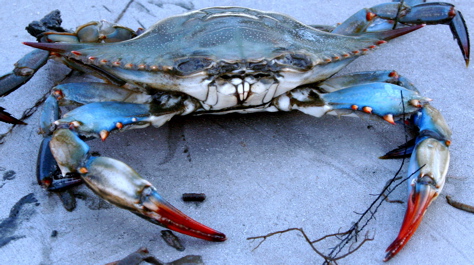Blue Crab Winter Dredge Survey
Survey data guide management actions
Blue crabs are known as feisty creatures, eager to pinch anyone who brings a finger within reach of their powerful claws. But on this day, the crabs on the deck of the VIMS research vessel Bay Eagle are as docile as lambs.
The reason? These crabs have just been dredged from the frigid bottom of Chesapeake Bay, where they lie dormant through the winter in water temperatures that approach freezing.
Sampling of these crabs is part of the Blue Crab Winter Dredge Survey, a collaborative venture between scientists at VIMS and the Maryland Department of Natural Resources that began in 1990.
Each winter since then, dredge-survey teams have sampled more than 1,500 sites throughout the Bay and its tributaries, providing a fishery-independent measure of blue crab abundance in the nation’s largest estuary. VIMS covers the entire Virginia portion of Chesapeake bay, sampling at more than 750 stations between November and March.
The purpose of the survey is to understand the dynamics of the blue crab population. Sampling in the winter, when crabs are stationary in the bottom, provides a snapshot of the population that is free from the biases otherwise introduced by the seasonal movements of these peripatetic creatures.
Blue crabs exhibit a complex life cycle in which females migrate to salty waters near the Bay mouth in the fall, and release their larvae to springtime currents that carry the larvae into the coastal ocean. There, the larvae develop until currents carry them back into the Bay and its tributaries to grow, mate, and complete their life cycle.
VIMS scientist Mike Seebo, who has led field portion of the winter dredge survey since 1990, says “the winter survey allows us to estimate year-to-year changes and is directly correlated with commercial landings. It also helps us understand the effects of over-wintering mortality, fishery-induced mortality, and seasonal migrations by means of our crab-tagging program.”
Professor Rom Lipcius, who heads up the VIMS component of the survey, adds, “the winter dredge survey is a unique, long-term, and reliable data set that is consistently cited as a vital and indispensable tool for blue crab fishery management.”










